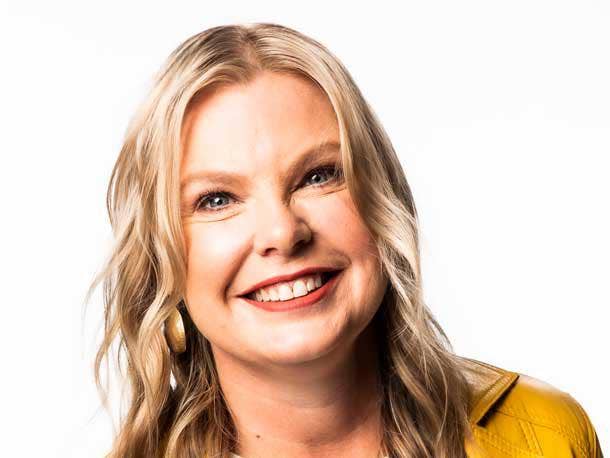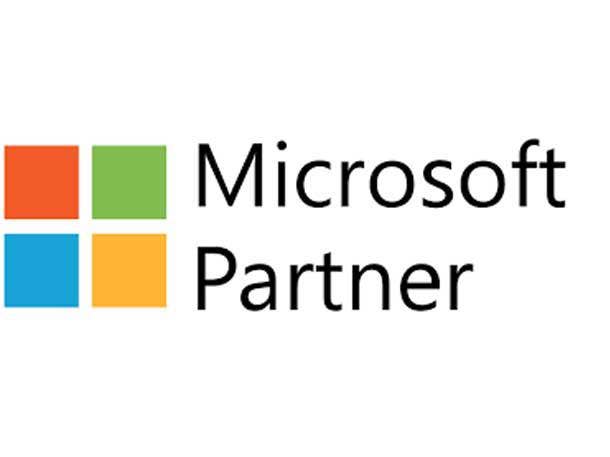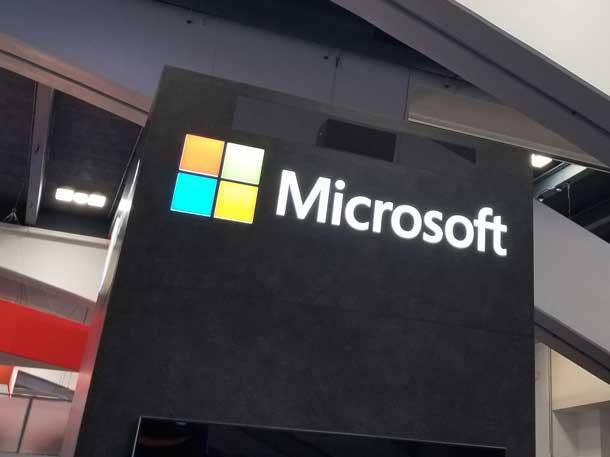Microsoft VP: Program Changes Allow Partners To ‘Differentiate’
“It is a big shift going from gold and silver competencies aligned [to a model] to the six solution areas. But the opportunity that gives us … that’s how Microsoft goes to market,” Microsoft partner VP Julie Sanford told CRN in an interview.

Recent changes within the Microsoft partner organization and the newly introduced Microsoft Cloud Partner Program – with new partner designations that replace gold and silver – are all part of an effort to meet the needs of various partner business types and better align partners with how Microsoft goes to market and how customers buy from the tech giant.
That’s according to Julie Sanford, Microsoft’s recently installed vice president of go-to-market (GTM) programs and experiences, who spoke with CRN about the Microsoft Cloud Partner Program (MCPP) – which replaced the Microsoft Partner Network effective Monday, Oct. 3.
“It is a big shift going from gold and silver competencies [to a model] aligned to the six solution areas. But the opportunity that gives us … that’s how Microsoft goes to market,” Sanford told CRN. “It’s how we design our products and innovations. It’s how we design our business models, our pricing structures, our own internal sales plays. And so, by partners understanding and being able to align themselves to the specialties that they have, we can support them in a way we never have before.”
[RELATED: Microsoft Cloud Partner Program Launches, End Of Silver And Gold]
What happened to Microsoft Gold and Silver?
Sanford’s promotion from the role of vice president of GTM strategy programs in the Global Partner Solutions organization was announced this summer.
Microsoft described her role as an assumption of responsibilities previously held by former channel chief Rodney Clark.
Clark’s other responsibilities went to David Smith, vice president of channel sales. Microsoft named Nicole Dezen its top channel executive, giving her the title of chief partner officer.
The new partner organization brings “all of our programs, capabilities and investments across one group so we could have a full left-to-right view of that and, more importantly, in service of all of our partner types,” Sanford said.
In September, Microsoft published a report on the state of its partner program – one of the largest in IT at 400,000 partners employing 22 million people worldwide. The report revealed that most partners employ multiple business models – reselling, selling services or selling their own software – but that software-led partners have a higher revenue multiple and higher gross margins than services-led partners.
Sanford said that services-led partners are still important to Microsoft.
“MPN [Microsoft Partner Network] was really pivoted towards our services and solution partners,” she said. “And the new Microsoft Cloud Partner Program will continue to do that through the evolution of these solution areas. … We want to make sure that the new Microsoft Cloud Partner Program does a better job of including all of our partner types.”
When asked if she has a message for partners who have had difficulty adapting to all the Microsoft partner program changes this year – including the roll out of Microsoft’s new commerce experience (NCE) – Sanford said that she appreciated partners and encouraged them to continue providing feedback to Microsoft.
The company is listening and was adjusting the Microsoft Cloud Partner Program rules before the launch to make sure it set up partners for success with customers, she added.
“Working with all of our partners—regardless of Gold, Silver or as a network member—they all have the opportunity to look at where they are today, build a path to the solution area designations,” Sanford said.
“And absolutely, we believe that’s the way to build success for them with the investments we’re making across the entire life cycle. And then being able to stack benefits as they move and expand their business across solutions areas, if that’s what they desire to do.”
Here’s what else Sanford had to say.

Microsoft Chief Partner Officer Nicole Dezen
What do partners need to know about the recent program organization leadership changes?
So the new organization that I have the opportunity to lead reports into our new chief partner officer, Nicole Dezen, and the partner GTM [go-to-market] programs and experience team was really our opportunity to bring all of our programs, capabilities and investments across one group so we could have a full left-to-right view of that and, more importantly, in service of all of our partner types.
And so, I’m just thrilled to have that opportunity. I also have made sure we had a focus on docking into how Microsoft as a company goes to market and that we’ve got synergies around our partners, growth strategies and execution.
So this change has allowed us to really do that with this new org. And then I would say the most exciting part is all of this comes to life tailored to our different partner types through this new partner program that we introduced back in March [in preview] and are so excited to launch.
What do you want partners to know about Microsoft’s Cloud Partner Program?
In March, we introduced the new Microsoft Cloud Partner Program [in preview] … it’s an evolution of our Microsoft Partner Network.
And the real focus for us, or the driver for us, was really the evolution of the business landscape. Technology’s rapidly changing, but I think what’s more acute is how much of a focal point it’s become for every single partner type in every single industry.
So we need to make sure that our program was not only meeting the needs of what our customers’ changing expectations were, but we were also getting feedback from our partner ecosystem that we had an opportunity to simplify engagement with Microsoft, but also help them differentiate themselves within their business to deliver to our joint customers. And so that was really the driving force behind the evolution. … First and foremost, we want to make sure that they [partners] access the resources that we’ve put in place for them.
So Partner Center is the primary way that our partners engage with us. And we have customized data for each partner to understand what the new program requirements are and – more importantly – where they are against those requirements and a path on how we can support to get them there.
And so it is a big shift going from gold and silver competencies [to a model] aligned to the six solution areas. But the opportunity that gives us … that’s how Microsoft goes to market.
It’s how we design our products and innovations. It’s how we design our business models, our pricing structures, our own internal sales plays. And so, by partners understanding and being able to align themselves to the specialties that they have, we can support them in a way we never have before.
So for example, if you’re a business applications partner wanting to do low-code development, we make sure that the software and cloud credits that you’re getting are aligned to the business application suite, make sure that we’re giving you the scaling and support that you need for business applications and the marketing services that go with that.
What I would love partners to know going forward is – we believe we as a company differentiate ourselves on how we deliver outcomes for our customers because we go to market through the Microsoft Cloud.
The Microsoft Cloud is made up of six solution areas. Our hope is that we work with partners on not only building their expertise within one solution area that helps them build their practice and capability across all solution areas – because that’s really what we feel will differentiate them in the marketplace and us collectively be able to deliver more business outcomes for our collective customers.

Are services-led partners still important for Microsoft’s GTM?
MPN [Microsoft Partner Network] was really pivoted towards our services and solution partners. And the new Microsoft Cloud Partner Program will continue to do that through the evolution of these solution areas.
And so it really is helping build their capabilities for services around those solution areas. Now, we want to make sure that the new Microsoft Cloud Partner Program does a better job of including all of our partner types.
And so, since the introduction in March, we introduced at [the Microsoft conference] Inspire the ISV [independent software vendor] Success program.
And so that allows our ISVs a very specific glide path into the Microsoft Cloud Partner Program. And so we’re in private preview of that swim lane right now with the goal of GA-ing in calendar year next year.
And then we also announced – and got feedback – that we’ve got industry partners that would prefer to go to market by industry versus solution area. And so that was another addition that we announced at Inspire.
So we’re currently in public preview around financial services, retail, health and life sciences, and sustainability.
With broadening the program today, making sure that we’ve got unique tailored offerings for each partner type, we want to make sure every partner feels like this is the home for them to engage with Microsoft.
I would say our next phase will be focusing on our OEM [original equipment manufacturers] devices support and learning partners as well.
So although we’re focusing across all the partner types, we’ve tried to customize each of the benefits and glide paths to set each of our partner types up for success because the entire ecosystem is just critical to us and our success and delivering to our customers.

Was that seven months of preview helpful for MCPP?
It was critical. A great example of what the public preview did for us … business applications is a good example.
We had partners helping us co-design the requirements and the benefits. And one of the pieces of feedback was exactly to your point around the customer segment.
We had originally designed the criteria that really felt good for enterprises. And what we got as insight from our partners was that [Microsoft customer relationship management application] Dynamics is critical to our SMB space, and the services that they were providing were critical for us to reach that space.
And so that actually resulted in a design change to the program where we didn’t adjust down the requirements. We just changed them based on the SMB requirements versus enterprise to make sure that partners that focus on SMB felt like we had the right investment and designation for them. So it follows more of a path like the ‘modern work’ solution area. So that was just one example of how critical getting their feedback and shaping this program was.
Are you satisfied with the number of partners reaching designations so far?
We feel very excited about the partners that are already reaching designations by day one. So all of those partners across the six solution areas will automatically receive their badging and all of the new benefits.
And then we are going to continue offering all of our partners the benefits that they enjoy today through the program we’re retiring, on the gold and silver competencies, with a primary focus on helping those partners grow and develop to meet those designations to also access all of the new incremental benefits that come with any program.
We’re very pleased with not only where we are, but also more importantly, the connection we had with the partner ecosystem.

Are distributors becoming more important for communicating with your partners?
Distributor partners have always been core and central to our strategy and we will continue to have that strong focus with that channel.
They are the way for us to make sure we can scale to all of the partner sizes that are important, again, across all partner segments, so they’re absolutely critical to the core of our partner ecosystem and will continue to be so.
Does the MCPP launch speak to your earliest goals in your new position?
I am excited that we have taken a partner profile approach to the support that we’re going to give them.
So for example, we want to make sure our partners not only have clarity on how Microsoft goes to market, but what’s the intersection with Microsoft on how we jointly go to market.
So are we investing in helping them – at the very beginning of their partner lifecycle – have access to the technology, the roadmaps, the information that they need in order to build their future roadmaps and innovation? … Are we putting [in] all of the right investments to help them take that to market?
So our marketing services, getting them onboarded into [Microsoft’s] marketplace if it’s an IP [intellectual property] offering. And then all the way through to proof of concept and pilot support.
So really, it’s stepping back and looking end-to-end across our collective customer journey. And are we making the right investments based on the persona of partner type that we’re supporting along the way?
And then that allows us just to give a more, I would say, unified way for us to connect the partners and our thousands of sellers that we have, as well as through the marketplace scale. So I am just excited about the opportunity to connect all of our resources, our programs against one go-to-market that we can collectively go to together.

What’s the pitch for new partners to join the Microsoft ecosystem?
First is just access to our customer base. We have thousands and thousands of customers that have bet their business on the Microsoft platform.
And so just having access to reach those customers through either a marketplace scale strategy, through our marketing offerings, or through the co-sell of our over 30,000 direct sellers.
And so that’s first and foremost. Second, when you look at the breadth of portfolio that Microsoft brings into the market, we are unique in the capability of being able to serve all the way from very small businesses up to the largest enterprises, so just access to a diverse set of customers.
And then the portfolio itself, being able to move from, you know, business processes to productivity process to the infrastructure back end, all wrapped in from a secure perspective.
We really believe that that is the way for partners to differentiate themselves, just given the breadth of our offerings.
Is there a message for partners who have found this year’s partner program changes difficult to handle?
First, I would thank our partners. Having them continue to provide us feedback when we have opportunities, like public previews, is just so critical for us. We’re in it together with them.
And I think the change we’re experiencing is just collectively keeping up with how quickly business is changing and how rapidly – not only the market – but technology is changing.
A huge thank you, and [I] encourage [them] to always give us the feedback and work with us to make sure that we’re delivering the product and offerings that they need to be successful. … I would encourage partners to participate in our industry designations.
Those are in co-design right now across retail, FSI [financial services industry], health and life sciences, and sustainability. And so knowing how important partners’ feedback is in helping shape what those designations and support offerings look like, I would really love to encourage partners to sign up and help us in that specific area. … Our No. 1 priority with our industry strategy is to really scale through our partners. They really are the ones that have unique industry expertise. And that’s both from a services and implementation perspective, as well as an IP statement.

What’s been your feedback from partners over all the changes?
The feedback that I’ve gotten from partners over the last, I’d say since July and Inspire, has just been feedback that this is simpler for them to engage with us. It’s clear on what they need to do to achieve success and they feel supported.
More importantly, we’ve gotten the feedback that they feel heard. So again, another example of a tweak we made within the requirements in the data and AI solution area was that we had a requirement on advanced spec[ification] certifications only. And it was actually not going to set our partners up for success to meet our customers’ needs.
And so their feedback was we need to be combining intermediate and advanced spec certification requirements. And so that was just a direct feedback we got from partners, made the adjustments. And so that’s really the tone – at least that I’m experiencing with partners – is they feel like they’ve had the opportunity to provide feedback. And we’re making course corrections where that makes sense. … The silver and gold designations, I would say, became diluted, almost, in how we were able to support partners in their growth.
And so the feedback we got from the partner ecosystem, whether they were in silver or gold, was the desire to be able to differentiate themselves based on how customers buy from Microsoft. And customers buy from Microsoft in our solution areas.
So working with all of our partners – regardless of gold, silver or as a network member – they all have the opportunity to look at where they are today, build a path to the solution area designations.
And absolutely, we believe that’s the way to build success for them with the investments we’re making across the entire lifecycle. And then being able to stack benefits as they move and expand their business across solutions areas, if that’s what they desire to do.